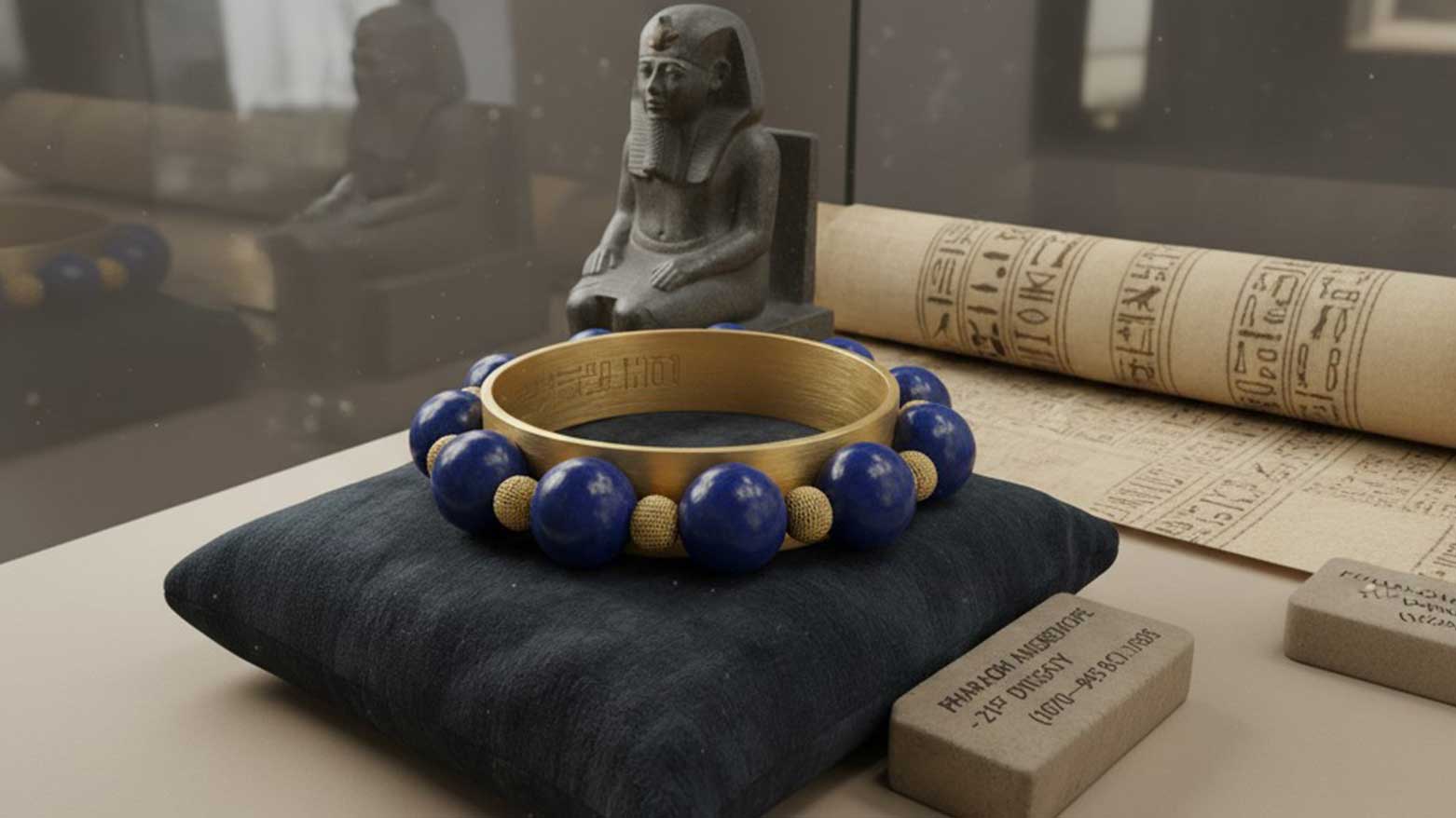3,000-Year-Old Gold Bracelet Reported Missing from Cairo Museum
A 3,000-year-old gold bracelet from Pharaoh Amenemope’s era has vanished from Cairo’s Egyptian Museum ahead of the Grand Egyptian Museum opening, prompting a nationwide investigation.

ERBIL (Kurdistan24) — A 3,000-year-old gold bracelet has gone missing from a restoration laboratory at Cairo’s Egyptian Museum, Egypt’s Antiquities Ministry confirmed in a statement on Tuesday.
The bracelet, a golden band adorned with spherical lapis lazuli beads, dates back to the reign of Pharaoh Amenemope of Egypt’s 21st Dynasty (1070–945 BC).
The ministry did not specify when the piece was last seen, and Egyptian media reports suggest the loss was detected only in recent days during an inventory check, though this has not been independently verified.
Authorities have launched an internal investigation and alerted antiquities units at airports, seaports, and border crossings nationwide. The ministry noted that the case was not publicly announced immediately to allow investigations to proceed, and a full inventory of the lab’s contents is currently underway.
The Egyptian Museum, located in Tahrir Square, houses more than 170,000 artifacts, including the famed gold funerary mask of King Amenemope.
The disappearance comes just weeks before the scheduled inauguration of the Grand Egyptian Museum on November 1, a long-awaited cultural milestone aimed at showcasing Egypt’s rich archaeological heritage under President Abdel Fattah al-Sisi’s administration.
Preparations are also underway to transfer some of the museum’s most iconic collections, including the treasures of King Tutankhamun, to the Grand Egyptian Museum.
The move follows a high-profile 2021 parade that relocated 22 royal mummies, including Ramses II and Queen Hatshepsut, to the National Museum of Egyptian Civilization in Old Cairo.
These efforts form part of a broader push to modernize Egypt’s museum infrastructure, attract international tourism, and reinforce the country’s global cultural standing.
AFP reports that authorities are emphasizing vigilance across the country to prevent smuggling of the priceless artifact, highlighting ongoing concerns about the security and protection of Egypt’s antiquities.
Egypt is home to one of the world’s richest archaeological legacies, spanning millennia of pharaonic, Greco-Roman, and Islamic history. Its museums, particularly the Egyptian Museum and the upcoming Grand Egyptian Museum, are central to preserving and showcasing this heritage.
However, Egypt has periodically faced theft, looting, and smuggling incidents, particularly during periods of political instability, prompting authorities to implement heightened security measures, strict inventory controls, and international cooperation to safeguard its invaluable heritage.
Notable examples include the 2011 looting of the Egyptian Museum in Tahrir Square during the revolution, when thousands of artifacts were reported missing or damaged, and repeated thefts from smaller regional museums, such as those in Minya and Alexandria.
Smugglers have often targeted gold jewelry, amulets, and small statues, which are easier to transport and sell on the black market.
Egypt’s archaeological treasures have long captured global attention, with many masterpieces now housed in world-renowned institutions. These include the Rosetta Stone at the British Museum in London, which was pivotal in deciphering hieroglyphs; the Dendera Zodiac, now in the Louvre in Paris; and numerous fragments of royal statues and sarcophagi spread across European and American museums.
While these pieces are legally or controversially abroad, they underscore Egypt’s immense cultural legacy and the enduring international interest in its ancient civilization.
Together, these challenges and international connections highlight why Egypt has strengthened security at its museums, archaeological sites, and border crossings, and why ongoing efforts to modernize institutions like the Grand Egyptian Museum are vital to both preservation and global cultural diplomacy.
